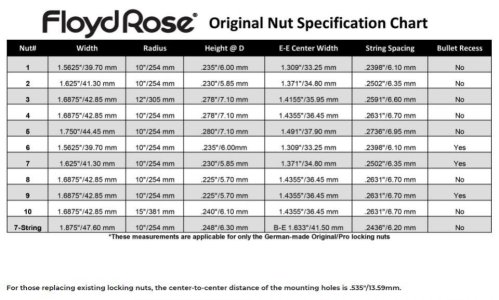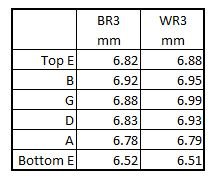Re: Floyd Rose Special Quality
I think this is not correct. Imagine that you had 30 or more frets, that frets expanded all the way to the bridge pickup with a progressive radius. What rational would justify to say that the bridge radius must be smaller than the max radius? String height would be incorrect.
Another way to immagine this : think that string height on all frets all strings is like 0.5mm, so we can say that strings "touch" the fretboard/frets. By this logic the bridge radius must be such that the action remains small and constant.
"The height of the strings above the fingerboard (or the action) is typically set at the bridge to match the curvature of the fingerboard radius more or less exactly, although players can easily adjust individual string height to personal preference. On instruments with compound-radius fingerboards, string height is typically set to match the fingerboard radius basically in the middle of the scale length; i.e., at or near the 12th fret."
I read that (logically) as saying that the bridge should have a 14" radius on a 12" - 16" radius neck???
Link is here: https://www.fender.com/articles/tech-talk/what-is-fingerboard-radius/
I think this is not correct. Imagine that you had 30 or more frets, that frets expanded all the way to the bridge pickup with a progressive radius. What rational would justify to say that the bridge radius must be smaller than the max radius? String height would be incorrect.
Another way to immagine this : think that string height on all frets all strings is like 0.5mm, so we can say that strings "touch" the fretboard/frets. By this logic the bridge radius must be such that the action remains small and constant.


